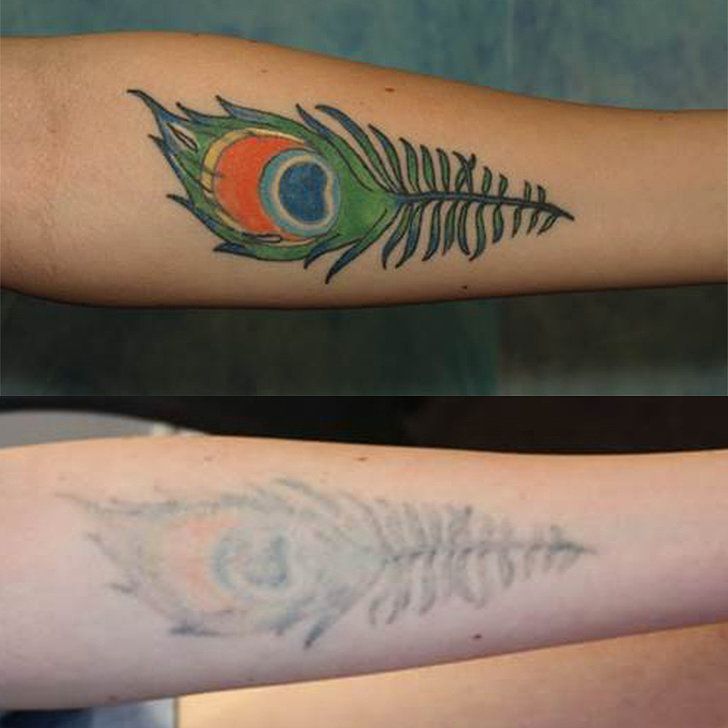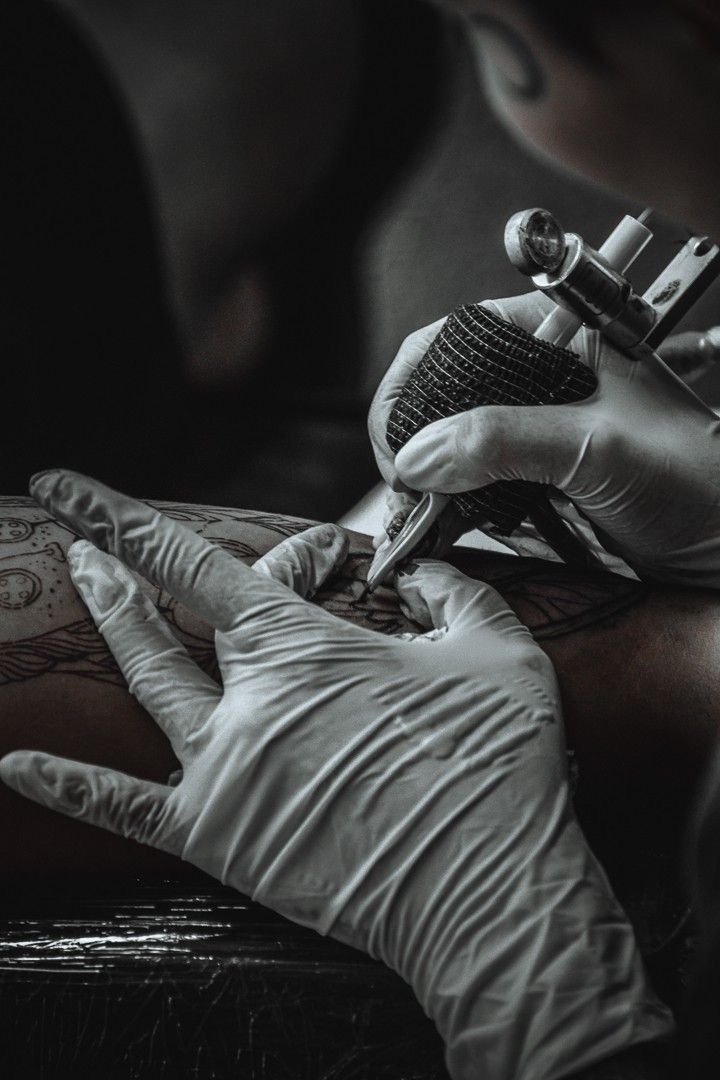How to Take Care of a New Tattoo at Home

Getting a new tattoo is exciting, but the aftercare process is just as important as the tattoo itself. A well-healed tattoo keeps its colors vibrant and lines crisp, while poor aftercare can lead to fading, infections, and permanent skin damage. In this blog, we’ll guide you through every step of taking care of your new tattoo at home using simple language and practical tips. Let’s get started.
First 24 Hours: Cleaning Your Fresh Tattoo
The first day after getting your tattoo is crucial. Once your artist finishes the work, they will usually wrap your tattoo in a protective bandage or plastic film. This keeps bacteria and dirt away.
What to do:
- Leave the bandage on for 2-4 hours unless your artist says otherwise.
- Wash your hands thoroughly before touching the tattoo.
- After removing the bandage, gently wash the area with lukewarm water and mild, fragrance-free soap.
- Pat it dry with a clean paper towel or let it air dry. Avoid using a regular towel, which may carry bacteria.
What to avoid:
- Don’t scrub or rub the tattoo.
- Don’t re-wrap the tattoo unless advised by your artist.
Essential Supplies for At-Home Tattoo Aftercare
You don’t need expensive products, but using the right ones can make healing easier and faster.
Must-have items:
- Mild, fragrance-free soap (like baby soap)
- Unscented moisturizing ointment or cream (tattoo-specific or basic options like Aquaphor or A&D)
- Clean paper towels or soft cloths
- Loose, breathable clothing
- Clean bedding
Keep your hands and the tattoo area clean at all times. Make sure all products are gentle and free of alcohol or strong chemicals.
How Often to Wash and Dry Your Healing Ink
Washing helps prevent infections and keeps your tattoo free of excess ink and fluids. But overwashing can irritate your skin.
Tips:
- Wash your tattoo 2–3 times daily for the first few days.
- Each time, use lukewarm water and gentle soap.
- After washing, pat dry or air dry.
- Follow with a thin layer of aftercare ointment.
Don’t apply too much moisturizer; the skin needs to breathe to heal properly.
Moisturizing: Choosing the Right Tattoo Ointment
Moisturizing your tattoo helps reduce itching and dryness.
Good options:
- Tattoo-specific balms (read reviews or ask your artist)
- Basic options like Aquaphor, A&D ointment, or coconut oil
How to apply:
- After cleaning and drying the tattoo, apply a thin layer.
- Don’t overdo it. Too much ointment can clog pores and delay healing.
Avoid petroleum jelly (like Vaseline) as it can trap bacteria and moisture, preventing proper healing.
Avoiding Infections: Hygiene Tips at Home
Infections are one of the most serious risks during the healing process. They often happen because of dirty hands, clothes, or environments.
How to stay safe:
- Always wash your hands before touching your tattoo.
- Sleep on clean sheets.
- Avoid letting pets or other people touch your tattoo.
- If the tattoo oozes or smells bad, contact your artist or doctor.
Watch for signs like redness, swelling, pus, or a burning sensation. These could mean an infection.
What to Wear: Clothing That Protects Your Tattoo
Your tattoo needs air, comfort, and protection. The right clothing can prevent irritation and help the healing process.
Tips:
- Wear loose, breathable fabrics like cotton.
- Avoid tight clothing that rubs the tattooed area.
- At night, avoid wrapping the tattoo too tightly.
- For leg or arm tattoos, consider rolling up sleeves or pant legs.
Let your skin breathe while keeping it safe from dirt and bacteria.
Sleep Positions That Won’t Smudge New Tattoos
Sleeping with a new tattoo can be tricky, especially if it’s on your side, back, or stomach.
Suggestions:
- Try to sleep on the opposite side of the tattoo.
- Use clean bedding every night for the first week.
- If needed, place a clean towel under your body to protect your sheets and tattoo.
Avoid rolling over onto the tattoo. This can lead to smudging, extra scabbing, or color loss.
Sunlight & Water: Exposure Rules While Healing
During the healing phase, sun and water are your tattoo’s enemies.
What to avoid:
- Direct sunlight on your tattoo for at least 2–3 weeks
- Swimming in pools, oceans, or hot tubs
- Long, hot showers or baths
Why?
- UV rays can fade ink and burn healing skin.
- Pools and hot tubs carry bacteria.
- Soaking can pull ink from the skin.
Once your tattoo is fully healed, always apply sunscreen (SPF 30 or higher) to protect it.
Recognizing Warning Signs of Tattoo Complications
It’s normal for a new tattoo to be red, swollen, or itchy for a few days. But sometimes things go wrong.
When to worry:
- Extreme redness that spreads
- Yellow or green pus
- Severe pain after the first few days
- Fever or chills
These signs may mean an infection or allergic reaction. Don’t wait—see a doctor or reach out to your tattoo artist for advice.
Long-Term Color Care After the Skin Heals
Once your tattoo is fully healed (usually 3–4 weeks), you can focus on keeping the colors bright and the lines sharp.
Tips:
- Use sunscreen every time your tattoo is exposed to the sun.
- Moisturize regularly to keep the skin healthy.
- Stay hydrated and eat a balanced diet.
- Avoid skin products with harsh chemicals or exfoliants on the tattooed area.
Taking care of your tattoo doesn’t stop when the skin heals. Good habits keep your ink looking fresh for years.
Final Thoughts
Caring for a new tattoo at home isn’t hard, but it does take commitment. Clean it regularly, moisturize wisely, and keep it safe from the elements. When in doubt, always ask your tattoo artist for guidance. Remember, how well you care for your tattoo determines how good it will look for years to come.
FAQs
Can I work out after getting a new tattoo?
It’s best to avoid intense exercise for at least 3–5 days. Excessive sweating and friction can irritate your tattoo and slow the healing process. Wait until the skin starts to heal and avoid exercises that stretch or rub the tattooed area.
What happens if my tattoo scabs or peels?
Scabbing and peeling are normal parts of the healing process. Don’t pick or scratch at them. Let the scabs fall off naturally to avoid scarring or ink loss. Keep the area moisturized and clean to help it heal smoothly.
Is it normal for a new tattoo to itch?
Yes, itching is common as your tattoo heals. Resist the urge to scratch. Instead, gently apply a thin layer of moisturizer. If the itching is intense or comes with swelling and redness, check for signs of an allergic reaction or infection.
Can I shave over a new tattoo?
No, avoid shaving the tattooed area until it’s fully healed, usually after 2–3 weeks. Shaving too soon can remove scabs, irritate the skin, and increase the risk of infection. Wait until there’s no peeling, scabbing, or tenderness before shaving again.
Should I avoid alcohol or smoking after getting a tattoo?
While not strictly forbidden, alcohol and smoking can slow down the healing process. Alcohol thins the blood and may increase swelling or bruising, while smoking reduces oxygen flow to the skin. For best healing results, limit both during the first week.




